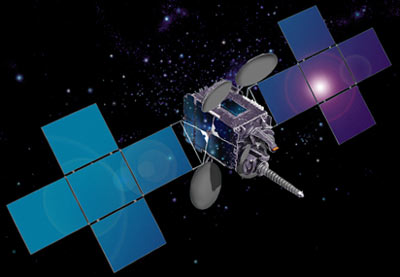Thank you very much for visiting Gunter's Space Page. I hope that this site is useful and informative for you.
If you appreciate the information provided on this site, please consider supporting my work by making a simple and secure donation via PayPal. Please help to run the website and keep everything free of charge. Thank you very much.
Optus C1 (Optus and Defence C1)

Optus C1 [SSL]
The Optus and Defence C1 relay platform will operate in four different frequency bands: commercial services in Ku-band for Singtel Optus; and military communications at UHF, X and Ka-bands for the Australian Department of Defence.
Optus and Defence C1 is one of the most advanced communications satellites ever built, carrying a total of 16 antennas that will provide 18 beams across Australia, New Zealand and the Asia-Pacific region, as well as global beams covering from India to Hawaii. It is to operate from an orbital slot of 156 degrees East Longitude
Singtel Optus has the prime contractor role to the Australian Department of Defence for the military communications payload, and the satellite was built under the responsibility of Japan's Mitsubishi Electric. The spacecraft uses a FS 1300 satellite bus from California's Space Systems/Loral, which handled its assembly, integration and testing, as well as the supply of the commercial Ku-band payload subsystem. Raytheon from the U.S. was the military UHF payload subsystem contractor.
The military Ka-band payload has four 33 MHz active transponders and one spare. It will provide medium to high data rate defense theatre coverage and duplex video, along with voice and data communications. This Ka-band communications service is a new capability for the Australian Department of Defence.
X-band telecommunications links provided via the satellite will be used by the military for medium to high data rate one- and two-way video, as well as voice and data communications. Service will be provided by four 60 MHz active transponders, with an additional transponder serving as a spare. The X-band communications links also are new for the country's defense network.
UHF links via the relay satellite will enhance UHF capabilities already employed by the Australian Department of Defence, and will be used for low data rate two-way voice and data communications. There are five 5 kHz channels and one 25 kHz channel provided via the satellite.
| Nation: | Australia |
|---|---|
| Type / Application: | Communication |
| Operator: | Singtel Optus, Australian Department of Defence |
| Contractors: | Mitsubishi Electric (prime), Space Systems/Loral (SS/L) (bus) |
| Equipment: | 24 Ku-band transponders, 4 (+1) Ka-band transponders, 4 X-band transponders, 6 UHF transponders |
| Configuration: | SSL-1300 |
| Propulsion: | ? |
| Power: | 2 deployable solar arrays, batteries |
| Lifetime: | |
| Mass: | 4725 kg (2000 kg dry) |
| Orbit: | GEO |
| Satellite | COSPAR | Date | LS | Launch Vehicle | Remarks | |
|---|---|---|---|---|---|---|
| Optus C1 (Optus and Defence C1) | 2003-028B | 11.06.2003 | Ko ELA-3 | Ariane-5G | with BSat 2c |
References:
- Space Systems/Loral: Optus-C1
- Aussat / Optus A1, A2, A3 [HS-376]
- Optus B1, B2, B3 [HS-601]
- Optus C1 [SSL-1300]
- Optus D1 [Star-2]
- Optus D2, D3 [Star-2]
- Optus 10 [SSL-1300]
- Optus 11 [OneSat]
